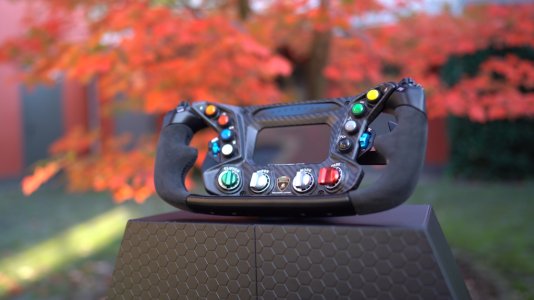That's a strawman argument. Just because you can easily spin a car in real life in certain situations doesn't automatically mean that there can be nothing wrong with a car that spins easily in a video game.
It's quite easy to see, over the past 15 - 20 years, that there are issues with oversteer in the ISI physics engine such as:
- Cars sometimes needing barely any lock to save the slide. If you apply more than a few degrees of lock, the slide abruptly ends (as if inertia / rotational inertia / mass doesn't exist) and snap-corrects the other way. So you have to keep the wheel almost straight and sort of just wait for the slide to end on it's own.
- Cars not wanting to "hold their line". Unless you're understeering, it's like there's an invisible force making the car want to keep turning-in sharper and sharper (as if you are applying more and more steering lock). This is mostly evident anytime you hold some brake even if it's small amounts. This is also why you can often go around corners using, literally, less than half the steering lock of real-life to get around many corners (Eg. RF2, going around Indianapolis using 25% the steering lock real Nascar drivers use with an even slower steering ratio than real life)
- Ending of a slide (how the car "recovers" / "comes back in line". Upon the initial saving of a slide, instead of the front rotating back to where it was before the slide, the rear rotates back inline to where the front is now pointing. (this also contributes to why there is often very little steering lock needed to correct slides and, perhaps more importantly, why you must return the steering wheel almost instantly back to centre upon saving a slide rather than holding the angle like in real life)
- Often, power oversteer wants to make the engine revs (and therefore rear tyres) insanely quickly shoot up as if your vehicle suddenly gained a ton of horsepower. It's like the rubber of the tyres have no mass trying to press them into the ground as they slip, it's similiar (not quite) to as if a rear tyre started spinning on ice rather than spinning on asphalt.
- plus more...
You can replicate this stuff over and over again regardless of car, setup, etc. You don't even have to be playing you can easily see the behavior in videos, replays, anyway. From any car, ever (from what I;m aware of) in the ISI engine going back at least 15 years to F1 2002.
This stuff is easily able to be noticed. Even new players (friends of mine) notice it. They don't know how to put it into words but when I then explain it to them, they always say "Exactly! Yes!".










